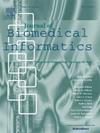PLAGCA: Predicting protein–ligand binding affinity with the graph cross-attention mechanism
IF 4
2区 医学
Q2 COMPUTER SCIENCE, INTERDISCIPLINARY APPLICATIONS
引用次数: 0
Abstract
Accurate prediction of protein–ligand binding affinity plays a crucial role in drug discovery. However, determining the binding affinity of protein–ligands through biological experimental approaches is both time-consuming and expensive. Although some computational methods have been developed to predict protein–ligands binding affinity, most existing methods extract the global features of proteins and ligands through separate encoders, without considering to extract the local pocket interaction features of protein–ligand complexes, resulting in the limited prediction accuracy. In this work, we proposed a novel Protein–Ligand binding Affinity prediction method (named PLAGCA) by introducing Graph Cross-Attention mechanism to learn the local three-dimensional (3D) features of protein–ligand pockets, and integrating the global sequence/string features and local graph interaction features of protein–ligand complexes. PLAGCA uses sequence encoding and self-attention to extract the protein/ligand global features from protein FASTA sequences/ligand SMILES strings, adopts graph neural network and cross-attention to extract the protein–ligand local interaction features from the molecular structures of protein binding pockets and ligands. All these features are concatenated and input into a multi-layer perceptron (MLP) for predicting the protein–ligand binding affinity. The experimental results show that our PLAGCA outperforms other state-of-the-art computational methods, and it can effectively predict protein–ligand binding affinity with superior generalization capability. PLAGCA can capture the critical functional residues that are important contribution to the protein–ligand binding.

PLAGCA:用图形交叉注意机制预测蛋白质与配体的结合亲和力
准确预测蛋白质与配体的结合亲和力在药物发现中起着至关重要的作用。然而,通过生物学实验方法确定蛋白质配体的结合亲和力既耗时又昂贵。虽然已经开发了一些预测蛋白质-配体结合亲和力的计算方法,但现有的方法大多是通过单独的编码器提取蛋白质和配体的全局特征,而没有考虑提取蛋白质-配体复合物的局部口袋相互作用特征,导致预测精度有限。在本研究中,我们提出了一种新的蛋白质-配体结合亲和力预测方法(PLAGCA),该方法通过引入图交叉注意机制来学习蛋白质-配体袋的局部三维(3D)特征,并整合蛋白质-配体复合物的全局序列/字符串特征和局部图相互作用特征。PLAGCA采用序列编码和自关注从蛋白质FASTA序列/配体SMILES串中提取蛋白质/配体的全局特征,采用图神经网络和交叉关注从蛋白质结合袋和配体的分子结构中提取蛋白质-配体的局部相互作用特征。所有这些特征被连接并输入到多层感知器(MLP)中,用于预测蛋白质与配体的结合亲和力。实验结果表明,我们的PLAGCA算法优于其他最先进的计算方法,可以有效地预测蛋白质与配体的结合亲和力,具有优越的泛化能力。PLAGCA可以捕获对蛋白质-配体结合有重要贡献的关键功能残基。
本文章由计算机程序翻译,如有差异,请以英文原文为准。
求助全文
约1分钟内获得全文
求助全文
来源期刊

Journal of Biomedical Informatics
医学-计算机:跨学科应用
CiteScore
8.90
自引率
6.70%
发文量
243
审稿时长
32 days
期刊介绍:
The Journal of Biomedical Informatics reflects a commitment to high-quality original research papers, reviews, and commentaries in the area of biomedical informatics methodology. Although we publish articles motivated by applications in the biomedical sciences (for example, clinical medicine, health care, population health, and translational bioinformatics), the journal emphasizes reports of new methodologies and techniques that have general applicability and that form the basis for the evolving science of biomedical informatics. Articles on medical devices; evaluations of implemented systems (including clinical trials of information technologies); or papers that provide insight into a biological process, a specific disease, or treatment options would generally be more suitable for publication in other venues. Papers on applications of signal processing and image analysis are often more suitable for biomedical engineering journals or other informatics journals, although we do publish papers that emphasize the information management and knowledge representation/modeling issues that arise in the storage and use of biological signals and images. System descriptions are welcome if they illustrate and substantiate the underlying methodology that is the principal focus of the report and an effort is made to address the generalizability and/or range of application of that methodology. Note also that, given the international nature of JBI, papers that deal with specific languages other than English, or with country-specific health systems or approaches, are acceptable for JBI only if they offer generalizable lessons that are relevant to the broad JBI readership, regardless of their country, language, culture, or health system.
 求助内容:
求助内容: 应助结果提醒方式:
应助结果提醒方式:


